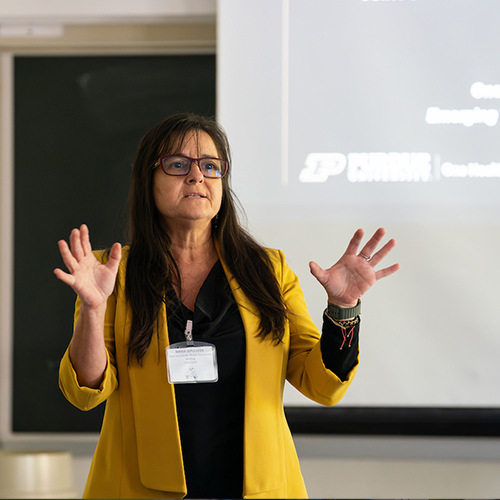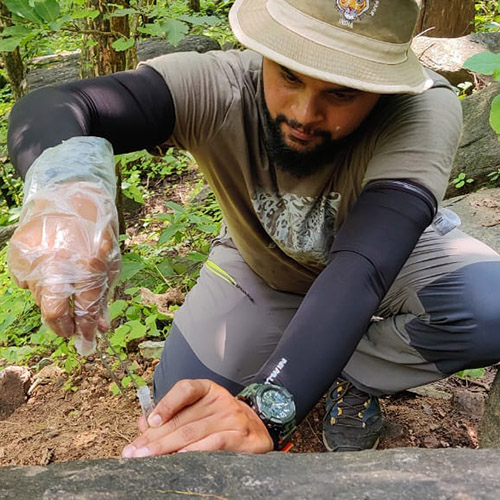Smoky Mountain Spring Break Trip Brings Disturbance Ecology Coursework to Life
While some students headed to tropical locales for Spring Break excursions, those in the FNR 53600/53601 Ecology of Natural Disturbances course made their way to Great Smoky Mountain National Park in North Carolina and Tennessee.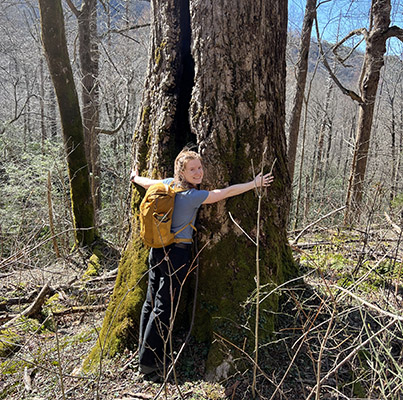
The field-based practicum allowed students to see and experience the effects of natural disturbances on forested ecosystems first hand. In addition, students met with natural resource professionals and state agencies to discuss the various responses to disturbance agents taken by those groups to improve community structure and resilience.
“On this trip, I learned how complex the ecosystems around the park are and the different historical and modern disturbances that have affected the landscapes,” Ruby Sanders said. “This eye-opening trip gave me a new perspective and a greater appreciation of Great Smoky Mountain National Park and the current programs in place to help manage the ecosystems. My favorite part was hiking Mount Le Conte and learning about the park’s history and ecology. It was really neat to see the ecosystem shifts as we changed elevations throughout the hike and learn about the park's legacy. I also really enjoyed getting to know my classmates better and experiencing the beautiful scenery with them!”
A full photo gallery from the trip is available on Facebook.
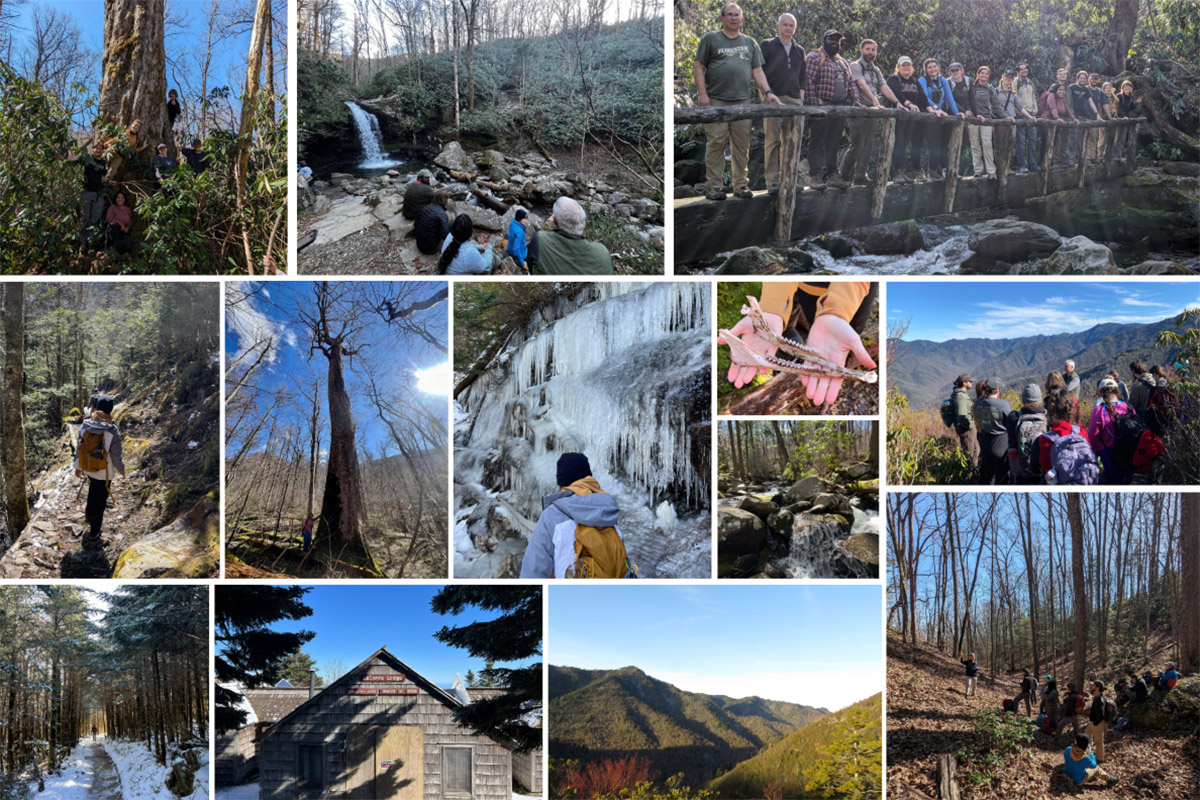 A collage of images of the various landscapes and ecosystems the group encountered in Great Smoky Mountain National Park
A collage of images of the various landscapes and ecosystems the group encountered in Great Smoky Mountain National Park The class spent its first full first day in Gatlinburg, Tennessee, visiting Cades Cove, a large limestone window in Great Smoky Mountain National Park. There they discussed the history of Cades Cove and the challenges of managing it as a cultural landscape. A five-mile afternoon bushwhack to Kalanu Prong allowed students to see a large old-growth yellow poplar and learn about the long history of settler use of the forests.
The next day brought a 14-15 mile hike up to the summit of Mount Le Conte. The hike included a 2600-foot elevation gain and a 3700-foot descent, using the Alum Cave and Trillium Gap trails. Students saw heath balds, or mountain crests covered in thick ericaceous vegetation, contrasted with a spruce-fir forest with balsam woolly adelgid damage and a beech gap affected by beech bark disease. The group also took in the beauty of Grotto Falls.
Regional fire ecologist Rob Klein spoke the group on Day 3, discussing fire as a disturbance agent, the southern pine beetle and the Park’s prescribed fire program. Students traveled to the west end of the park and hiked to one of several on-site prescribed burn units.
A morning visit to Albright Grove, an acidic cove, old-growth forest kicked off Day 4. GSMVP botanist Troy Evans joined the group on the seven-mile hike along the Maddron Bald and the Albright Grove Loop Trail, sharing the park’s policies and options for control of hemlock woolly adelgid along the way. An off-trail excursion through Level 2 “Rhodo-hell” allowed some students to see the world’s largest red maple. The day finished with an afternoon at the GSMNP Science Center that included a visit with entomologist Becky Nichols, who discussed the park’s all-taxa survey and the impacts of disturbances on aquatic and invertebrate communities.
“The entire trip was an experience where what we learned in (the) lecture (course) came to life, but we also learned new things as well,” Gabby Dennis said. “We talked about a variety of things from insect pests (e.g., hemlock wooly adelgid) to disease (e.g., beech bark disease) to invasive mammals (feral hogs) and more.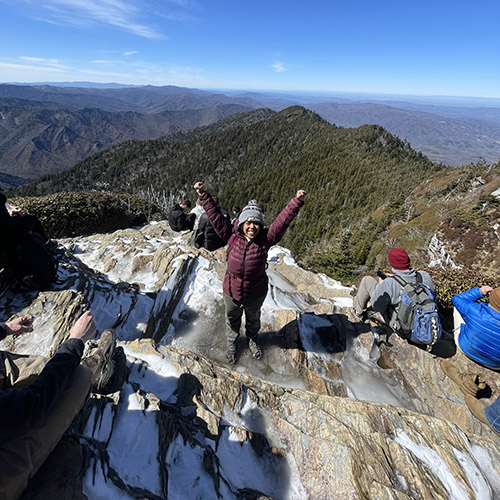 We also talked a lot about fire ecology and the benefits of prescribed burns (and different burning strategies/types).
We also talked a lot about fire ecology and the benefits of prescribed burns (and different burning strategies/types).
“My favorite part was summiting my first mountain (Mount Le Conte). I enjoyed how as we hiked up and down the mountain, we could see changes in the forest types and structures. It felt very liberating to summit my first mountain. I also feel like it was a special moment for me because I'll be working in the White Mountains of New Hampshire this summer as a bird bander at Hubbard Brook Experimental Forest. So, I feel like this was a great intro to the mountains of the East.”
This year’s spring break trip also was memorable for the course leaders, Dr. Mike Saunders and Dr. Mike Jenkins.
“These were some of the most engaged students, particularly the undergraduates, that we have ever had in the course,” Saunders said. “This group was always positive, ready to explore and learn. Teaching this course is always a highlight for me. More so than any other course, I get to know the students on a personal level. We also get to share the pains (and tribulations) of a 15-mile hike over Le Conte, which at my age gets a bit more painful every course offering.”
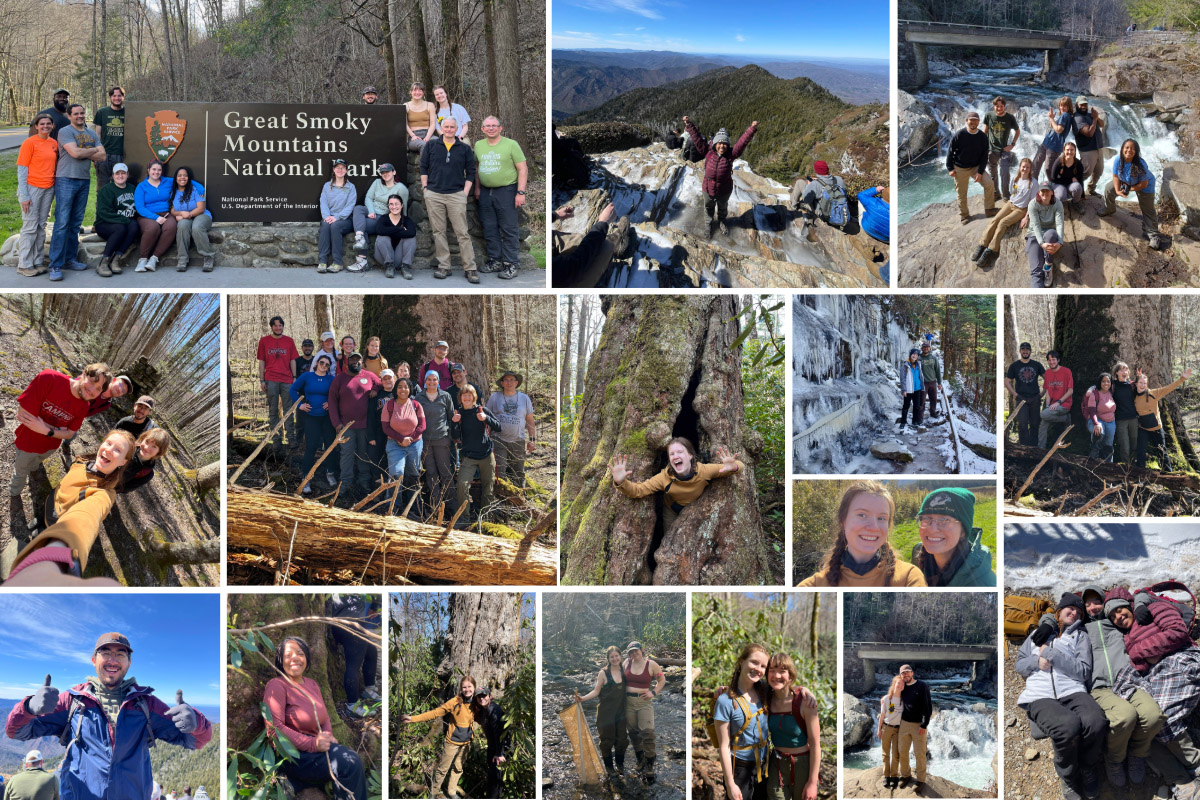 A collage of images of the students, faculty and speakers at the disturbance ecology practicum in the Great Smoky Mountains.
A collage of images of the students, faculty and speakers at the disturbance ecology practicum in the Great Smoky Mountains. 



